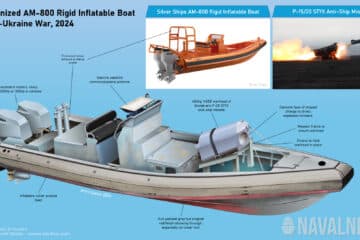The Russian Navy has unique undersea warfare capabilities designed to operate on undersea cables. This could include planting listening devices or, in extreme cases, breaking the connection. And Western Navies are taking it seriously. In response to this the Royal Navy recently announced that it will commission a dedicated cable defense vessel by 2024. So what is the shape of the threat it is designed to counter?
When fears of internet outages caused by underwater sabotage are raised, we often hear that breakages are quite common. Boat anchors do snag cables and this is relatively quick to fix. But these are in shallow water because a ship cannot anchor in the open ocean, it is too deep. Russian seabed warfare capabilities on the other hand can easily reach about 1,000 meters (3,280 feet) depth, and some systems can go much deeper.
Russia’s ‘seabed warfare’ capability is centered on the Main Directorate of Undersea Research. Known in defense circles by the Russian acronym GUGI (Glavnoye Upravleniye Glubokovodnykh Issledovaniy) they are more formally refereed to as Military Unit 40056. They are widely suspected of being in charge of more than ‘research’. GUGI operates a large secret naval base called Olenya Guba (‘deer bay’) near the famous Kola Peninsular in the Russian Arctic. All of the below capabilities can be found there.
1. Special Mother Submarines Carrying Smaller Submarines
Some of the world’s largest submarines are not those armed with ballistic missiles, but actually spy submarines. Russia has an established practice of converting submarines to carry special deep-diving nuclear powered submersibles, known as AGS, under their bellies. The host submarines are based on types which are already large, but they are stretched to accommodate the AGS. Currently two converted Delta class subs are used but an even bigger Oscar-II conversion, Belgorod, is expected to join them.
The AGS can dive to around 1,000 meters (3,280 feet), possibly deeper. They can work on the sea floor for several days at a time before docking again with the host submarine. This capability is discrete and has global reach, not least under the ice cap where regular ships cannot venture.
The most famous AGS is called Losharik, named after a cartoon horse which was made out of a string of orbs. This references its unusual titanium hull construction. Losharik suffered a serious accident on July 1 2019 and remains out of service. But it is expected to be returned to service in the next few years. In the meantime Russia has others.
2. Yantar, the best known Spy Ship
Few ‘research’ ships have attracted as much attention as GUGI’s ship Yantar. She is suspected of deploying remotely operated vehicles (ROVs) and crewed submersibles over undersea internet cables. Initially she was easy to track because she conformed to the research vessel norm of broadcasting her position via AIS (Automated information System). But since last year she appears to turn her AIS off when it suits her, a privilege for military vessels. Yantar’s true capabilities and mission are likely to remain ambiguous, yet she is operating in the shadows on the very edge of legitimate scientific research.
3. Autonomous Underwater Vehicles
Russia has been catching up with the West in terms of underwater drones. The main type is the Klavesin 2P-PM which can dive to around 2,000 meters (6,560 feet), although some sources suggest even deeper. The deepest diving of the related models is the Vityaz-D which can reach at least 10,028 meters (32900 feet). This brings anywhere on the sea floor within their grasp. Currently these AUVs are mainly for inspection or intelligence gathering. But Russian firms are working on new models with manipulator arms which could increase their threat to cables.
AUVs are generally carried by the special mission host submarines. But they are small enough that they can be launched from other vessels covertly, including from merchant ships. The deeper diving types tend to only travel a few miles laterally so the support vessel might need to loiter nearby.
4. Dual-role submersibles
Not every task requires the relatively expensive Losharik deep diving submarine. Russia started using its deep-diving rescue submarines for other seabed tasks many years ago. They weren’t well suited and one got into serious trouble in 2005 and had to be rescued by a Royal Navy team. But the latest Bester model is designed with this dual role in mind and is advertised for seabed operations. Like the Losharik it can be carried on the ginormous special mission host submarines.
5. Trained Beluga Whales
The Russian Navy’s marine mammal program largely escaped notice until a tame Beluga Whale turned up in Norway in April 2019. There were however already signs of its gaining importance. In late 2018 marine mammals, likely dolphins, were deployed to the conflict in Syria. And a Beluga whale pen was moved from its usual home to the GUGI’s main base at Olenya Guba. This associates the Beluga program, and possibly the seals and dolphins, with GUGI. Although unconfirmed, it is plausible that Beluga whales could covertly reconnoiter undersea infrastructure. They are the ultimate stealthy operator and can dive to depths of about 1,000 meters (3,280 feet).






